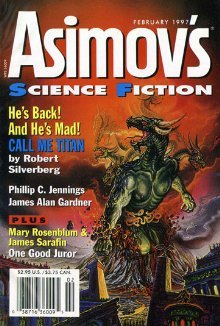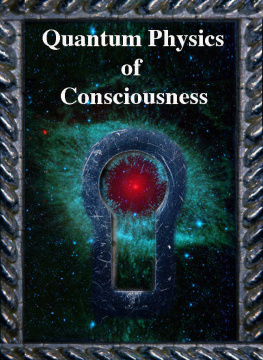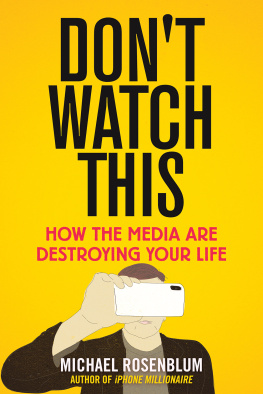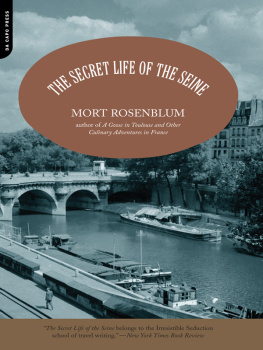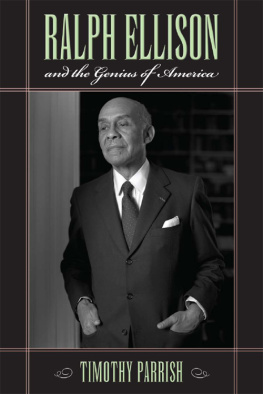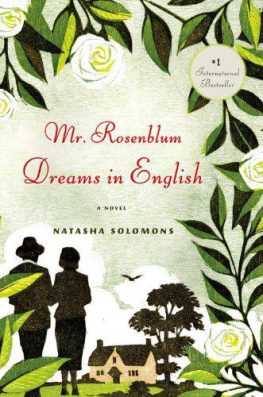Rosenblum Ralph - When the shooting stops -- the cutting begins
Here you can read online Rosenblum Ralph - When the shooting stops -- the cutting begins full text of the book (entire story) in english for free. Download pdf and epub, get meaning, cover and reviews about this ebook. City: New York;United States, year: 2002;2009, publisher: Da Capo Press, genre: Non-fiction. Description of the work, (preface) as well as reviews are available. Best literature library LitArk.com created for fans of good reading and offers a wide selection of genres:
Romance novel
Science fiction
Adventure
Detective
Science
History
Home and family
Prose
Art
Politics
Computer
Non-fiction
Religion
Business
Children
Humor
Choose a favorite category and find really read worthwhile books. Enjoy immersion in the world of imagination, feel the emotions of the characters or learn something new for yourself, make an fascinating discovery.

- Book:When the shooting stops -- the cutting begins
- Author:
- Publisher:Da Capo Press
- Genre:
- Year:2002;2009
- City:New York;United States
- Rating:5 / 5
- Favourites:Add to favourites
- Your mark:
- 100
- 1
- 2
- 3
- 4
- 5
When the shooting stops -- the cutting begins: summary, description and annotation
We offer to read an annotation, description, summary or preface (depends on what the author of the book "When the shooting stops -- the cutting begins" wrote himself). If you haven't found the necessary information about the book — write in the comments, we will try to find it.
When the shooting stops -- the cutting begins — read online for free the complete book (whole text) full work
Below is the text of the book, divided by pages. System saving the place of the last page read, allows you to conveniently read the book "When the shooting stops -- the cutting begins" online for free, without having to search again every time where you left off. Put a bookmark, and you can go to the page where you finished reading at any time.
Font size:
Interval:
Bookmark:
After editing over 35 feature films, from Long Days Journey Into Night and The Pawnbroker to Goodbye Columbus and six of Woody Allens first seven films, RALPH ROSENBLUM is now a director. His recent work includes Summer Solstice with Henry Fonda and Myrna Loy, as well as two productions of the American Short Story for PBS and one American Playhouse production. He is visiting professor of film production at the State University of New York at Purchase.
ROBERT KAREN has written extensively on politics, film, and psychology. His articles have appeared in New York Magazine, Gentlemens Quarterly, the Nation, Vogue, Savvy, the Washington Post, Newsday, and elsewhere. He is a contributing editor of Cosmopolitan, and he teaches at the New School for Social Research in New York City. His next book is about experiences of power and insecurity in everyday life.
The authors are now collaborating on a documentary film about a student uprising of the sixties.
SHOOTING
STOPS
...the Cutting
Begins
Robert Karen

Library of Congress Cataloging in Publication Data
Rosenblum, Ralph.
When the shooting stops, the cutting begins.
(A Da Capo paperback)
Includes index.
1. Moving-pictures Editing. I. Karen, Robert
II. Title.
TR899.R67 1986 778.535 86-11495
ISBN-10: 0-306-80272-4 ISBN-13: 978-0-306-80272-0
eBook ISBN: 9780786747382
Acknowledgments
Film Quarterly: From Robert J. Flaherty, 1884-1951, by Helen van Dongen, Vol. 18, No. 4 (Summer 1965). Reprinted by permission of the Regents of the University of California.
Alfred A. Knopf, Inc.: From The Parades Gone By... , by Kevin Brownlow. Copyright Kevin Brownlow, 1968. Reprinted by permission of Alfred A. Knopf, Inc.
The photograph on page x: The Paramount cutting room, circa 1927 (the editor is Jane Loring). Courtesy Richard Koszarski Collection.
The excerpts from The Producers by Mel Brooks are reprinted by permission of Mel Brooks.
This Da Capo Press paperback edition of When the Shooting Stops... the Cutting Begins is an unabridged republication of the edition published in New York in 1979. It is reprinted by arrangement with the authors.
Copyright Ralph Rosenblum and Robert Karen, 1979
Published by Da Capo Press, Inc.
A Member of the Perseus Books Group.
All Rights Reserved
Manufactured in the United States of America
For my mother, Davida, Emily, and Paul
R.R.
For my mother and my father
R.K.
SHOOTING
STOPS

The Hands behind the Seams
D ont worry, well fix it in the cutting room, is a prayer thats been uttered in every language, on every location, in every country where films have been made. Shooting a film is the most expensive entertainment production ever devised. When mistakes are made, or scenes fall short of the directors vision, the immense cost of doggedly pursuing the cinematic fantasy on the set (as wages of cameramen, performers, set directors, makeup artists, and scores of assistants and associates accumulate at union-scale tempo) dampens even the most ambitious directors desire for perfection. And so the cutting room becomes the last-stand corral for everyones hopes that the unrealized dreams, the dead moments, the inevitable blah sequences from weeks of shooting will finally be brought to life.
But cutting is only marginally a matter of fixing. When it came into being in 1902, film editing transformed motion pictures from a recording medium into an art form. In its simplest aspect, cutting is about juxtapositions. A man awakens suddenly in the middle of the night, bolts up in bed, stares ahead intensely, and twitches his nose. If you cut now to an image of clouds drifting before the full moon, the audience is primed for a wolf-man adventure. If you cut to a room where two people are desperately fighting a billowing blaze, the viewers realize that through clairvoyance, a warning dream, or the smell of smoke, the man in bed has become aware of danger. If you cut to a distraught wife defending her decision to commit her husband to a mental institution, they will understand that the man in bed is her husband and that the dramatic tension will surround the couple. If youre editing an Alfred Hitchcock movie, the juxtaposition of the man and his wife will immediately raise questions in the viewers minds about foul play on the part of the woman. If you then cut back to a hospital aide ordering the man out of bed for breakfast, the audience will already be searching for hints about the mans mental state and expecting a significant clue to arise from this interaction.
The cutting room is the domain of the film editor, a man or woman barely known outside the film industry. He is often an introverted and cautious individual who may think of himself as a talented technocrat, a guardian of the tough, mechanical facts of cinematic technique; or as a behind-the-scenes power, like a presidents brain truster, unsung but indispensable; or as a creative genius in his own right, a star whose light is blocked by the medieval movie protocol that gives directors and actors almost exclusive credit for a films success. Whatever his self-image, a key part of his job in the months he will spend absorbed in the seemingly endless footage will be to make his own contribution as imperceptible as possible. No viewer should walk out of that film saying, I really dug the editing. The final product should have a natural seamless effect, as if it were originally shot just the way it looks on the screen. And if an advertisement ever announces that the film has won an Academy Award for editing, the name of the editor will probably not be mentioned. He inhabits an anonymous world, and various aspects of the trade conspire to keep him anonymous.
Of course, within the movie business a certain amount of lore has built up about the implacable technicians, the strung-out geniuses, the doctors, the firemen, the men with magic hands, and the marvelous feats of filmic endurance and transformation that have gone on in those bleak, windowless cells where most pictures have been cut. Hollywood buffs may have learned that editor Elmo Williams was a major factor in the success of High Noon, that he was responsible for the pictures strict correspondence between screen time and real time, and that his device of cutting repeatedly to the old courthouse clock created much of the fantastic tension in that famous film. They may have heard of Merrill White, who was called in one day in 1953 by executives at RKO and asked if he could salvage a disaster called The Brave One. #x201C;I'II need a year, White is supposed to have said after viewing the original version. Already known as an irascible technician who would curse and threaten a film that gave him trouble, White probably set a record for editorial rage when, several months into The Brave One, he came roaring out of his second-floor stall, emerged on the balcony with his Moviola in tow, and in a superhuman frenzy dumped the unbudgeable three-hundred-pound machine to its destruction. (His re-edited version won the author, Dalton Trumbo, an Oscar in 1954.) A very different sort of editor, the ever dapper Paul Falkenberg, is still remembered with delight by film workers in New York. An intimidating, no-nonsense old-timer who once landed me a job cutting the Guy Lombardo TV show, Falkenberg is best recalled for an incident that occurred when MCA invited him to rescue a horrid underseas adventure. The short, balding, penguin-shaped wizard stepped briskly into the screening room, dispensed with the niceties, and proceeded to endure the film. Then, with the lights back on and his features still set in the formal mode of a high-priced surgeon about to deliver a considered opinion, the master announced, From shit you get shit! and marched out.
Font size:
Interval:
Bookmark:
Similar books «When the shooting stops -- the cutting begins»
Look at similar books to When the shooting stops -- the cutting begins. We have selected literature similar in name and meaning in the hope of providing readers with more options to find new, interesting, not yet read works.
Discussion, reviews of the book When the shooting stops -- the cutting begins and just readers' own opinions. Leave your comments, write what you think about the work, its meaning or the main characters. Specify what exactly you liked and what you didn't like, and why you think so.



